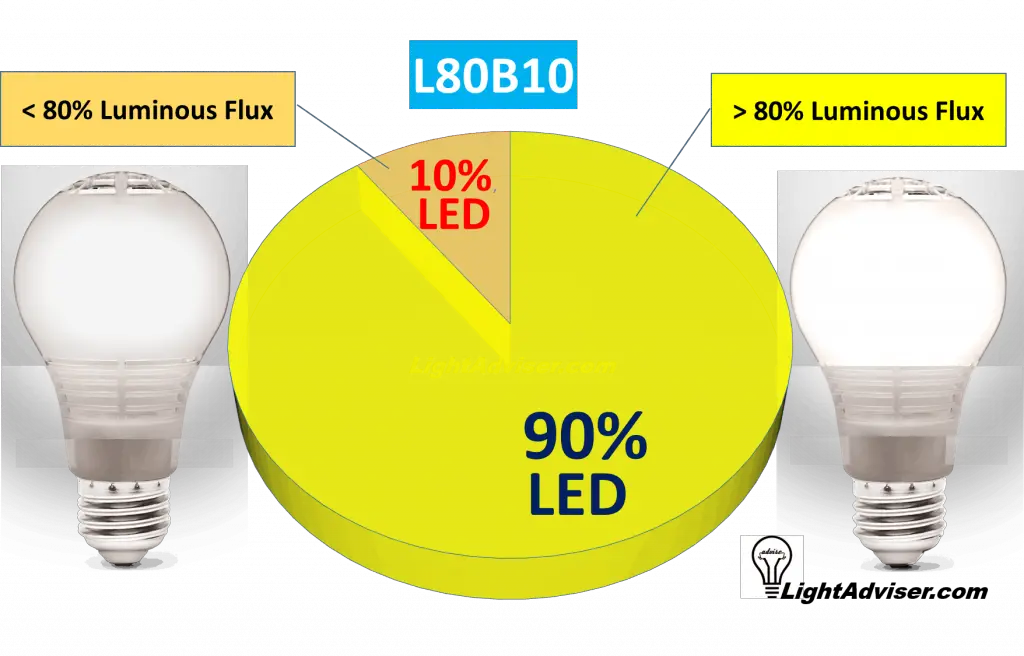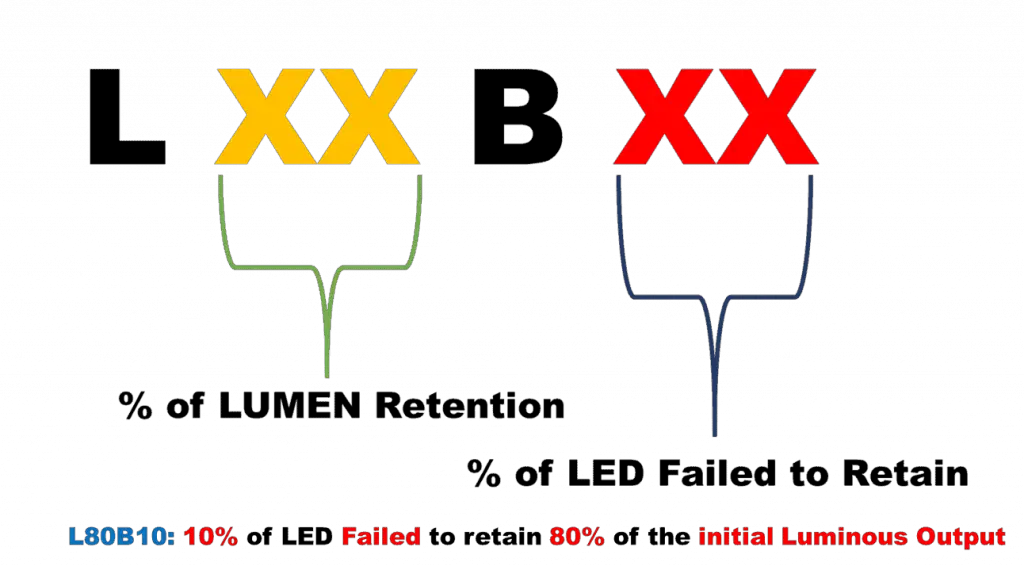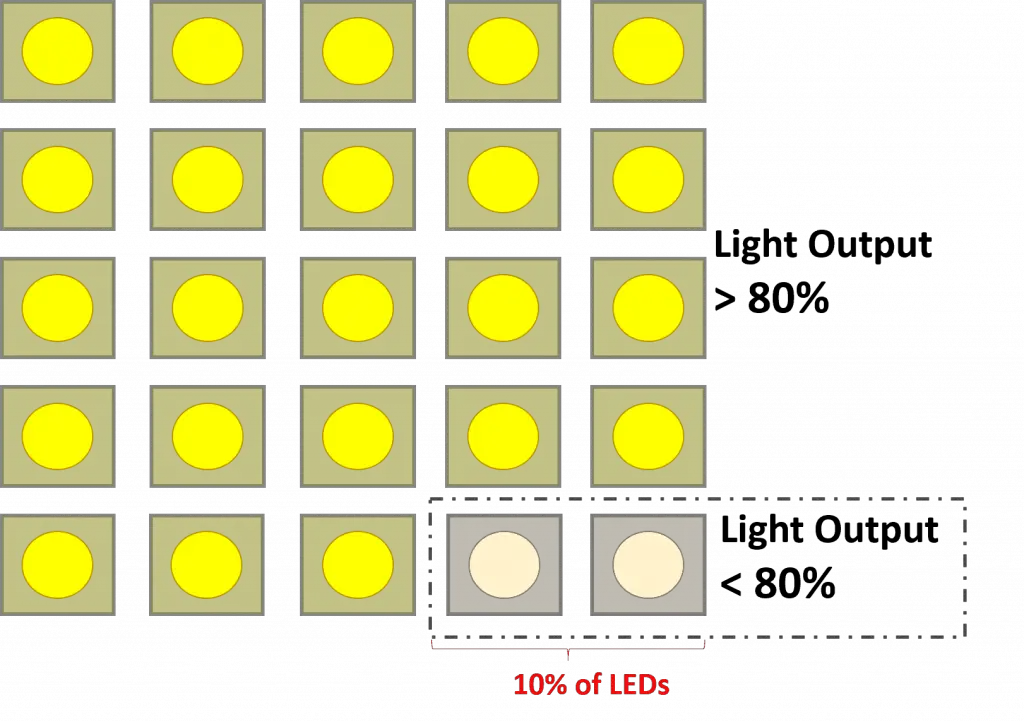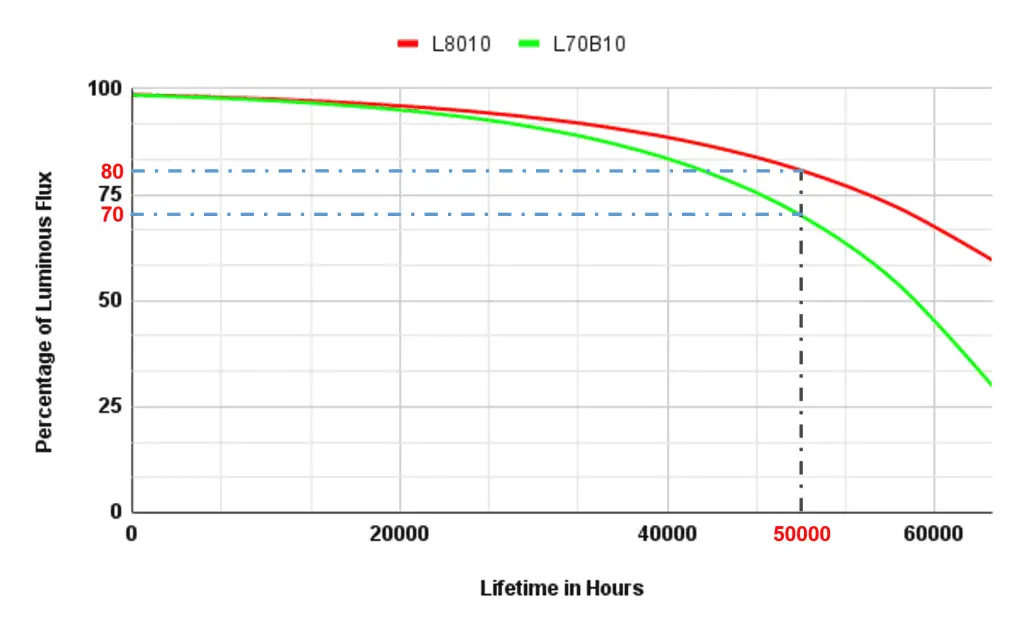With the use of LEDs, as with any electrical device, the lighting tends to gradually decrease. There is a standard called L80 B10 that determines the lifespan of LEDs. We will inform you what exactly this means and what you can pay attention to when choosing your LEDs.
The specification L80B10 describes the time after which 10% of the LEDs emit a luminous flux that is lower than 80% of the original flux.

Key facts at a glance:
- This parameter can be used to make statements about the service life and luminosity of an LED
- Specifically, the marking shows the decrease in luminous flux
- The standard is made up of two units: an L-value and a B-value
- It is related to LED binning, in which the similarities and differences of LEDs are measured and these are divided into so-called binning areas
What does L80 B10 mean and how is it made up?
The parameter L80 B10 provides information about the percentage of the original luminous flux of an LED type that is retained over the specified service life of the LED. The luminous flux is measured in the unit of the lumen and shows the emitted brightness of a light.
As a buyer, you will find out how much luminosity you can rely on for the life of your LED. In other words: which LEDs meet a high standard – and which do not!
The designation contains two items in its nomenclature. This means that your reading is divided into two parts: L80 and B10.

What does L80 mean?
At least 80% of the luminous flux is maintained for a defined period of time.
What does B10 mean?
10% of the LEDs achieve a luminous flux value that is lower than 80% of the original value in the course of their service life.
So, L80B10 meaning:
The specification L80 B10 describes the time after which B% of the LEDs emit a luminous flux that is lower than L% of the original flux.

The marking is sometimes supplemented by the number of hours the LED has reached its lifespan. This way you know for which period of time the statement about the illuminance is valid.
What does L80B10 mean specifically for you as a consumer?
To explain the standard to you even more clearly, here is an example:
Assuming an LED has the designation L80 B10 – 50,000 h. This means that after a service life of 50,000 hours (approx. 16 years) 10% of the LEDs have a luminous flux value of less than 80% of the original flow.
Or the other way around: With 90% of the luminaires, the luminous flux value is retained in such a way that it does not drop to less than 80% of the initial brightness.
In a professional environment, the minimum requirement of L70 / B10 should be met with long burn times. This applies, for example, to multi-shift operations in the industry.
However, a standard of L80 / B10 is mostly recommended for LEDs. It represents the highest possible level, thus offering the best reliability and a high-quality mark.
Some LEDs do not meet the minimum requirements and lose significantly more of their luminosity within their service life.

The above graphic shows that LEDs no longer correspond to 100% of their initial luminosity after 50,000 operating hours. After this lifetime it is 80% if we follow the red line, 70% if we follow the blue line.
Under normal conditions of use, the period of 50,000 hours is approximately 16 years. This is still much more than with conventional light sources, which lose their luminosity at an early stage. For comparison:
- Fluorescent tubes last about 2 to 6 years,
- Halogens 10 months,
- traditional lightbulbs only 4 to 8 months.
What does L80 B10 have to do with LED binning?
The binning is a system for measuring and sorting LEDs with similar characteristics. In particular, the color temperature and the voltage are taken into account.
Binning areas provide information on how much similar LEDs deviate from the standard value. McAdams ellipses illustrate these deviations.
Such binning is also interesting when it comes to the service life and luminous flux of LEDs – and this is where the parameter L80B10 comes into play!
This knowledge makes it easier for you as a user to select the LED. It shows how much you can rely on the luminosity of your lamp.
Last but not least, you can even use this specialist knowledge to advise your friends, colleagues, or family members.

